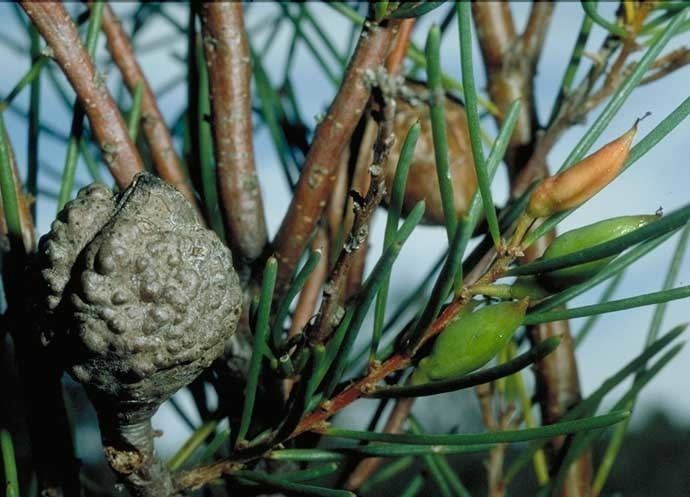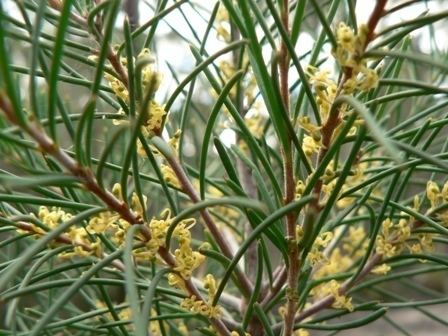Genus Hakea Rank Species | ||
 | ||
Similar Hakea ulicina, Hakea epiglottis, Hakea decurrens, Leptospermum continentale, Ozothamnus ferrugineus | ||
Hakea nodosa, commonly known as yellow hakea, is a shrub that is native to Australia.
Contents
Description

Yellow hakea is erect in habit, usually growing to about 3 metres tall and a similar width. Its needle like leaves are usually between 40 and 50 mm in length.

It has small, cream to yellow flowers, clustered along the branches, which appear between late autumn and late winter (May to August in Australia). These are followed by woody seed capsules that are 30 to 35 mm long. Two contrasting types of the latter are produced, one that is woody with contrasting lighter bumps, and the other that is smooth, not woody and opens while still attached to the branch.
Taxonomy

The species was first formally described by botanist Robert Brown in 1810. The specific epithet is derived from the Latin word nodosus meaning "knobbly" or "gnarled", referring to the fruits.
Distribution
The species occurs in south-eastern South Australia, Victoria and north-eastern Tasmania.
Cultivation

Yellow hakea is adaptable to a wide range of soils and climatic conditions and will grow well in full sun or part shade.

